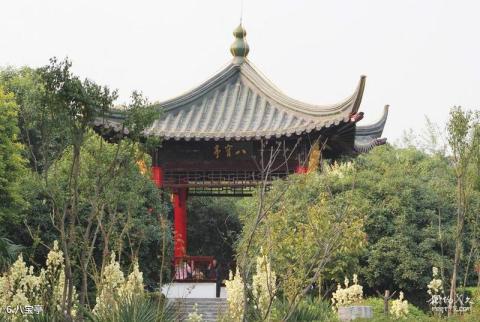
Introduction to Babao Pavilion: Babao Pavilion is like Tiger Hill to Suzhou and Wuting Bridge to Yangzhou. It is a symbol of Baoying. In the 30th year of the Jiajing reign of the Ming Dynasty (1551), the county magistrate Yue Dongsheng dredged the Debao River and erected a monument and pavilion by the river to commemorate Zhenru's acquisition of the treasure. The pavilion is square in shape, with a glazed tile roof and pointed corners. It is 5 meters high, 12 meters in circumference, and covers an area of 100 square meters. It was inscribed by the famous contemporary calligrapher Zhao Puchu. In the original pavilion, the remaining stele from the 30th year of Jiajing in the Ming Dynasty and the inscriptions on the pavilion's construction during the Daoguang and Republic of China years were also moved to the side of the pavilion, and a new stele was erected to record the reconstruction of the Babao Pavilion.
